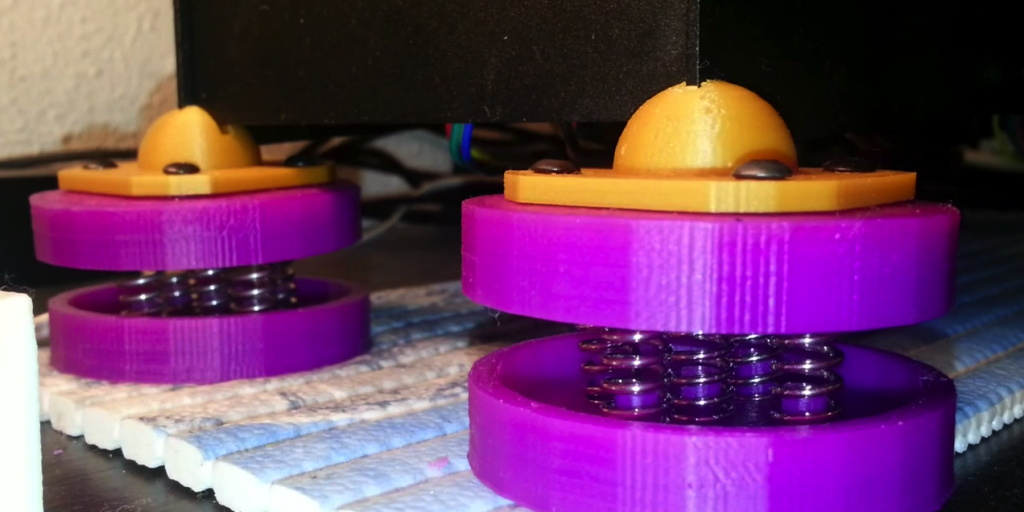
Shock absorbers aren’t just used in cars. They are used in many other mechanical devices and equipment as well, to absorb shock by converting the kinetic energy into another less aggressive form of energy (usually heat).
“I believe that even if something works, there’s always a better way of doing it,” Chan tells 3DPrint.com. “The constant desire to improve will drive innovation and I would be happy if people find ways to improve on my designs because I’m sure these are not the ultimate solutions.”
Chan’s latest design is something that he created in order to aid in his obsession of 3D printing. Chan, like many of us, has a desktop 3D printer, and he has a tendency to run it at all hours of the day and night. However, he was having a problem that he couldn’t seem to solve.
“In spite of sitting the printer on a foam mat, the vibrations from infills and rapid axis changes would rattle even the heavy sideboard it sits on,” Chan tells us. “In turn, low-frequency vibrations could be heard even a couple of floors below my apartment. I did consider putting a rug or some insulation under the sideboard but it wouldn’t solve a generic problem that I’m sure many 3D hobbyists face.”
So being the problem solver that he is, Chan set out to not only find a solution, but to design one that could actually be 3D printed itself. Starting with Google SketchUp, he drew out a design for what he called the “Printer Shock Absorbers.” His design was based on research that he did on how to earthquake-proof buildings. He wanted a product that would be durable, easy to produce, and would support any 3D printer on the market.
“I went with a hybrid solution of 3D prints, coupled with tough extruder springs,” Chan explains. “The base units are the heart of the system, and any user with a different printer simply needs to adapt a mount for their printer’s feet to join the shock absorber’s base unit.”
The four small devices, which consist of five springs each, rest under the four corners of the 3D printer. In turn, when the printer is running, and is making rapid X/Y axis movements and directional changes, it dampens the vibrations, dissipating the energy instead of letting it create noise and/or long-term issues of jarring the printer’s components loose.
“This design allows 360 degree movement and I no longer feel or hear the vibrations I used to get on the table,” said Chan. “I’ve kept the old foam mat until I have time to get some nice fitting rubber feet.”
In all, it it took about 6 hours for Chan to complete his 10 prints on his Printrbot Simple Metal 1403 3D printer. He has since made the files available for others to download as well on Thingiverse. Other than the 3D printed parts, the shock absorbers consist of the aforementioned springs as well as 16 M3*8mm screws to lock the printer feet clips to the base units.
What do you think about this clever idea? Do you wish to reduce the vibration-caused sounds of your 3D printer? Discuss in the 3D printed shock absorber forum thread on 3DPB.com. Check out the video of the shock absorbers in action below.